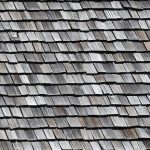As homeowners, we all know the importance of a sturdy roof in protecting our homes from the elements. Whether it’s rain, snow, or the scorching sun, our roofs act as the first line of defense.
One lesser-known but effective way to enhance the longevity of your roof is the use of zinc strips. In this guide, we’ll explore the ins and outs of zinc strips and how they can be a game-changer for the health of your roof.
The Science Behind Zinc Strips
Zinc strips might seem a bit mysterious if you’re new to them, but their effectiveness stems from the basic principles of chemistry.
When rainwater runs over these strips, small amounts of zinc are released. This process creates a protective barrier on your roof that prevents the growth of moss, algae, and other organic matter. By doing so, zinc strips not only maintain the aesthetic appeal of your home but also contribute to the overall health of your roof.
The Benefits of Zinc Strips
Moss and Algae Prevention: One of the primary advantages of zinc strips is their ability to deter the growth of moss and algae. These organisms not only compromise the visual appeal of your roof but can also lead to more serious issues like water damage and compromised structural integrity.
Long-Term Cost Savings: While the initial cost of installing zinc strips might seem like a significant investment, it’s essential to consider the long-term savings. By preventing the growth of harmful organisms, you reduce the need for frequent roof cleanings and potential repairs. This can translate into significant savings over the life of your roof.
Environmentally Friendly: Zinc is a naturally occurring element and is considered environmentally friendly. Unlike some chemical treatments, zinc strips provide a sustainable solution to roof maintenance without posing any harm to the surrounding ecosystem.
Installation and Maintenance Tips
Now, let’s get into how to install and maintain zinc strips:
Professional Installation: While some homeowners may opt for a DIY approach, it’s recommended to seek out the services of a professional for the installation of zinc strips. This ensures proper placement and maximum effectiveness.
Strategic Placement: Zinc strips are typically installed a few inches below the ridge of the roof, allowing rainwater to activate and distribute the zinc particles across the entire surface. Proper placement is key to reaping the full benefits of this innovative solution.
Regular Inspections: Like any component of your home, zinc strips require periodic inspections. Check for any debris accumulation, and ensure that the strips remain in good condition. If any issues are detected, prompt action can prevent potential damage.
In the quest for a resilient and long-lasting roof, zinc strips can play a complementary role in your roof maintenance strategy. Their ability to ward off moss, algae, and other threats not only preserves the beauty of your home but also safeguards your investment.
Frequently Asked Questions About Zinc Strips for Roofs
Do Zinc Strips Really Work on Roofs?
This is a common question among homeowners, especially when it comes time to consider roof maintenance solutions. The short answer is yes. However, the effectiveness of zinc strips can vary based on factors such as the climate, the pitch of the roof, and the amount of rainfall. In areas with heavy and frequent rainfall, zinc strips may be more effective.
Zinc strips are known for their ability to inhibit the growth of algae, moss, and fungi. These unsightly invaders not only compromise the aesthetic appeal of your home but can also cause damage if left untreated.
The science behind how zinc works lies in its natural anti-fungal and anti-microbial properties. When rainwater interacts with zinc, it results in a chemical reaction that releases zinc ions into the runoff water.
While zinc strips are effective, it’s important to note that they work preventatively. If your roof already has growth, it’s best to clean it thoroughly before installing zinc strips. Prevention is the key, and zinc strips offer a proactive solution to keep your roof looking clean and well-maintained.
Where Do You Put Zinc Strips on a Roof?
Correct placement is crucial for the effectiveness of zinc strips. Typically, zinc strips are installed along the ridge of the roof, parallel to the roofline. This strategic placement allows rainwater to wash over the strips, releasing zinc ions and creating a protective barrier against algae and moss.
It’s important to consult with a professional or follow the manufacturer’s guidelines to ensure proper installation. DIY enthusiasts should exercise caution and adhere to safety guidelines when working on the roof.
How Long Do Zinc Roof Strips Last?
The longevity of zinc roof strips is a significant factor for homeowners evaluating the cost-effectiveness of this solution. Estimates vary, but on average, they last 5+ years, depending on factors such as the climate, the pitch of your roof, and the level of exposure to the elements.
Regular maintenance and inspection can extend the lifespan of zinc strips. If you notice significant wear or damage, it’s advisable to replace them promptly to ensure continuous protection for your roof.
What Does Putting Zinc on Your Roof Do?
Beyond the prevention of algae and moss growth, putting zinc on your roof offers several benefits. Firstly, it helps to preserve the structural integrity of your roof by preventing the deterioration caused by these invasive organisms. This, in turn, extends the lifespan of your roof and reduces the need for costly repairs or replacements.
Additionally, the aesthetic appeal of your home is preserved. A clean and well-maintained roof contributes to the overall curb appeal, making your home more inviting and attractive. This is particularly important if you are considering selling your home in the future, as a well-maintained roof can significantly enhance its market value.
Moreover, by inhibiting the growth of algae and moss, you also contribute to the overall health of your home. These organisms can trap moisture, leading to rot and decay. By preventing their growth, you create a drier environment that is less conducive to the development of structural issues.
Zinc strips for roofs can be a smart investment for homeowners looking to protect their homes from the detrimental effects of algae and moss. With proper installation and maintenance, these strips offer a cost-effective solution to keep your roof in optimal condition, preserving both its functionality and aesthetic appeal.
For more on the subject, check out our blog Zinc vs Copper Roof Strips.
Have questions? Reach out to us. We’re always happy to help!







